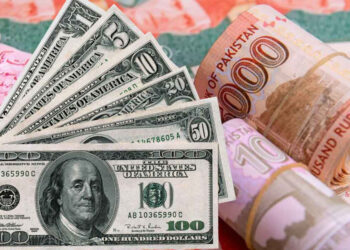India-Pakistan relations have been often dominated by security issues with comparatively less attention given to the untapped trade opportunities between the two countries.
According to a 2018 World Bank report, India-Pakistan trade has the potential to increase from USD $2 billion to USD $37 billion if both countries were willing to take steps towards removing tariff and non-tariff barriers.
However, decades-old animosity and mistrust have contributed to regular setbacks and significant barriers to normalizing trade relations. Let’s take an in-depth review of the Pakistan-India trade relations.
ECC decision and Cabinet refusal
The Economic Coordination Committee (ECC) allowed the private sector to import 0.5 million tonnes of white sugar from India, the newly appointed Finance Minister Hammad Azhar announced.
“The country will also import cotton from India starting from end-June this year,” he added. However, the Federal Cabinet rejected the Economic Coordination Committee (ECC) suggestion to import cotton yarn and sugar from India.
The decision to turn down the proposal was taken in a cabinet meeting chaired by Prime Minister Imran Khan in Islamabad, hours after Minister for Human Rights Shireen Mazari said cabinet will review the ECC’s decisions related to trade with India.
“Just for the record — All ECC decisions have to be approved by cabinet & only then they can be seen as ‘approved by govt’! So today in the cabinet there will be a discussion on ECC decisions including trade with India and then the government decision will be taken! The media should be aware of this at least!” Mazari wrote in a tweet.
Pakistan-Indian trade ties
Pakistan was one of the leading buyers of Indian cotton until 2019, when Islamabad banned imports of goods from India after New Delhi revoked the special status of Indian Occupied Kashmir (IoK). India is the world’s biggest producer of cotton and the second biggest sugar producer.
Prior to August 2019, formal trade between the two countries was estimated at USD $2 billion. Pakistan’s exports to India include vegetable products, textiles, dry dates, rock salt, cement, leather, surgical instruments, carpets, and gypsum. While India’s exports to Pakistan consist of cotton, organic chemicals, dyes and pigments, machinery, pharmaceutical items, teas and spices, iron and steel and plastic goods.
Despite continuing tensions, trade between the two countries grew marginally in subsequent years; Indian exports rose nearly 6 percent to $1.92 billion in 2017-18, and then by around 7 percent to $2.07 billion in 2018-19. Imports from Pakistan also increased by 7.5 percent to $488.56 million in 2017-18 from $454.49 million in 2016-17.
Barriers to India-Pakistan trade
Obstacles to India and Pakistan trade consist of both tariff and non-tariff barriers including strict quality standards, sensitive lists (goods on which no tariff concessions are granted), lengthy procedures and waiting periods at the border, strict visa policies, and lack of proper infrastructure such as roads, dry ports and rail cargo stations to facilitate trade.
The current freeze in trade relations has already impacted multiple industries. For instance, the Pakistani textile industries often import reactive dyes from India as they are less expensive. Moreover, about 31 percent of Pakistan’s cement exports go to India.
Benefits of Stronger India-Pakistan Trade Relations
Beyond the economic impact, trade has the potential to act as a confidence building measure between the two countries. Enhancing economic cooperation and regional trade would leave both India and Pakistan with an opportunity to divert the enormous defense budget towards pressing issues, such as access to health services, free education, and proper housing.
Opening formal channels of trade would further streamline informal trade and reduce smuggling, which has the potential to lead to increased government revenue through customs duties.
Furthermore, regional trade also has the potential to create jobs and promotes economic growth and development. At a time where each country’s economy is slowing, enhancing bilateral trade can help in creating demand for their exports and help reinvigorate economic growth.




































